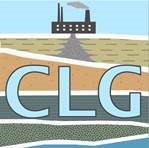Date:
06 - 07 November 2017
Organised by:
Geological Society Events, Contaminated Land Group
Venue:
The Geological Society, Burlington House
Event status:
EVENT CLOSED

With 2017 being the ‘Year of Risk’, the Contaminated Land Group proudly hosted this year’s Janet Watson meeting.
The conference explored emerging science, technologies and guidance in the contaminated land industry, told from the viewpoint of all the key stakeholders: the site owner, consultant, contractor and regulator.
Keynote talks were provided by accomplished industry leaders and the conference also provided a platform for scientific developments and innovative projects presented by the students, academics and early-career professionals working on them.
The varied programme included workshops, an expert panel discussion and presentations by speakers from a number of backgrounds. Whilst offering all delegates the opportunity to become up to date with many of the latest technologies and guidance, the conference also provided a great opportunity for networking particularly beneficial for early-career professionals interested in or are currently working towards chartership in contaminated land.
Speakers
Key note speakers included:
- Claire Dickinson (Independent)
- Judith Nathanail (Land Quality Management Ltd)
- Simon Cole (AECOM)
- Hazel Gibson (University of Plymouth)
- Mike Smith (Independent)
- Gareth Leonard (Regenesis)
- Jon Lloyd (University of Manchester)
- Sarah Mortimer (The Environmental Protection Group Ltd)
- Matthew Pearce (National Grid Plc)
- Quentin Hulm (Cornelson)
Conveners
The early-career sub-committee of the Contaminated Land Specialist Group:
- Katherine Hunt (Jacobs) Chair
- Amy Juden (Arup) Secretary
- Sarah Hey (Hydrock)
- Clay Durrant (Environment Agency)
- Kristian Fox (Atkins)
- Molly Brown (IGE Consulting)Conveners
Talks
Session 1 Innovative Risk Assessment
KEYNOTE: Risk Assessment - what you don't know!
Claire Dickinson (Independent)
KEYNOTE: Why the conceptual site model is (should be) at the heart of contaminated land risk assessment, Judith Nathanail (Land Quality Management Ltd)
KEYNOTE: Ground Gas: Moving forward site investigation, monitoring & risk assessment techniques, Sarah Mortimer (The Environmental Protection Group Ltd)
Detailed and innovative site investigation of a complex radiologically contaminated site - Harwell Liquid Effluent Treatment Plant (LETP), Melanie Wright (Jacobs)
Session 2 Understanding, managing and communicating risk
KEYNOTE: Communicating the Unseen and Unfamiliar: using our differing ideas about the subsurface to improve effective communications, Hazel Gibson (University of Plymouth)
KEYNOTE: Managing a Portfolio of Brownfield Sites: Hundreds of sites, thousands of stakeholders, Matthew Pearce (National Grid Plc)
The use of GIS to improve geoenvironmental reporting efficiency, Harriett Wood (Jacobs)
Understanding uncertainty and the limits of knowledge that govern the outcome of risk assessments - case studies exploring the role of traditional analogue modeling techniques, Mike Plimmer (Geotechnical & Environmental Associates Ltd)
Characterising the Haystack of Geogenic Organics arising from Hydraulic Fracturing, David Blyth (Imperial College London)
Session 3 Emerging remediation technologies
KEYNOTE: Benefits of Professional Qualifications and Accreditation: A view from industry, Simon Cole (AECOM)
KEYNOTE: PerfluorAd Case Study: An efficient and cost effective treatment process for PFAS contaminated waters, Quentin Hulm (Cornelson)
KEYNOTE: Contaminated Land Bioremediation: Harnessing the power of subsurface microbial processes, Prof Jon Lloyd (University of Manchester)
KEYNOTE: From Laboratory to Site: the development and deployment of an innovative Liquid Activated Carbon technology to target contaminant plumes, Gareth Leonard (Regenesis)
KEYNOTE: Old Age Problems: Emerging technology needs to address risks from increasingly aged solvent-contaminated sites, Michael Rivett (GroundH2O plus Ltd/University of Strathclyde) and Jim Wragg (Geosynte)
Session 4 New guidance, standards and the evolving role of the regulator (part 1)
KEYNOTE: Local Authorities: Why guidance should be at the heart of everything we do but isn’t, Rob Ivens (Mole Valley DC) and Rachel Thomas (Pembrokeshire CC)
KEYNOTE: Environment Agency: Promoting best practice, developing guidance and improving standards for land contamination, a regulators perspective, Angela Haslam (Environment Agency)
KEYNOTE: British and International Standards and Codes of Practice: Origins and application to contaminated land investigation and assessment, Mike Smith (Independent)